“Mom, mom, look at what a miracle I did!” - rushes out of the group kindergarten a three-year-old creator with a craft at the ready to meet his mother who came for him. There is so much joy and pride in the baby’s eyes. Of course: he himself made something new with his own hands, something that didn’t exist before, and he succeeded! Children love to create. Handmade crafts for a 2-3 year old child are very important: this is both a way to express oneself as an individual and to gain knowledge of the world. And if something suddenly breaks (disassembled toys: dolls left without arms, and cars without wheels) - then this is also creation, because in order to do something, you need to find out how something works. This is how the world is known. With the participation of adults and, first of all, parents, he learns faster.
Features of young children
Remember the song from the funny children's cartoon "Beware of the Monkeys"? It perfectly characterizes those who “came out of the diapers”: two-three-year-old little people. Hyperactivity and the inability to concentrate attention for a long period on something specific at this age is the norm. After all, a child’s mental processes are still involuntary. Therefore, when planning an activity with your baby, choose simple crafts. For children 2-3 years old, handicrafts should not exceed 15 minutes. Time is given with a reserve, because concentration of attention at this age is possible only for 3-5 minutes.
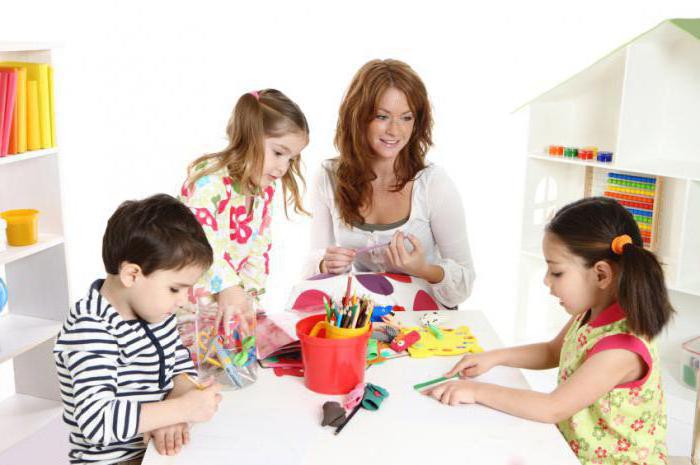
What crafts are best for a 2-3 year old child?
1. Not requiring sitting in one place for more than 15 minutes: We must remember the line from the song mentioned above about half a kilo of explosives.
2. Easy things to do: relying on the proverb about perseverance and work is still premature.
3. Those that can be finished within 15 minutes. Choose a craft that you can do in this period of time, so you can teach your child to finish the job.
4. Choose a work option that will probably be interesting, and the end result will impress the baby.
5. Educational crafts for children 2-3 years old - ideal. Therefore, try to combine handicrafts with the development of speech, logic, and self-care skills.
The main condition for engaging in creative work is that the child should do the work mainly; the mother only prompts and guides.
Drawing
Creating masterpieces with help is an exciting activity for a child. When the child learns not only to stain himself with paint, but also to move his finger across the paper, his hands become stronger, give him a thick (for convenience) brush. By the age of 2, we already have an experienced artist who has gone through the stage of scribbling and arrived at the stage of scribbles and lines. You can safely start drawing little men from the song “Dot, dot, comma - a crooked face” with his pen. By the age of two and a half to three years, the baby will be able to draw his first cephalopod himself.
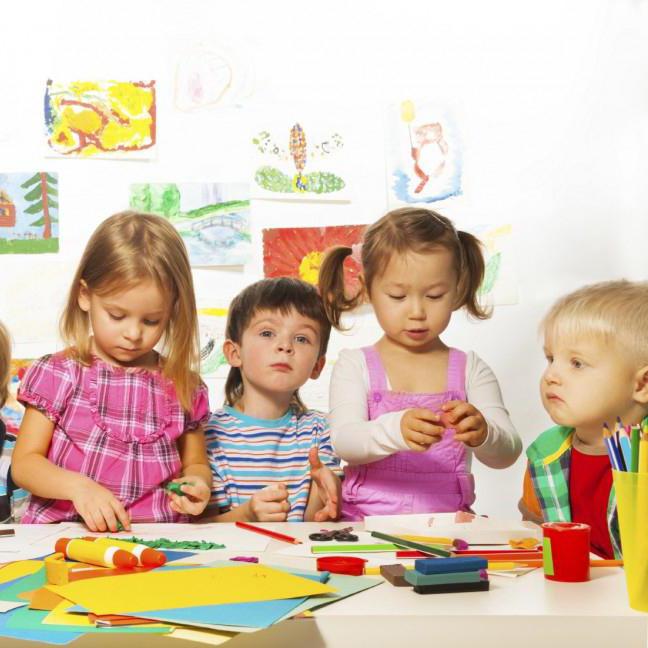
Modeling
All mothers know how important it is to develop their child’s hands. Modeling is one of the ideal activities for its development. It is best to start introducing your child to sculpting when he is one year old. First, introduce the baby to the modeling material. Yes, by the way, it’s worth paying attention to the optimal choice of what you need to make crafts from with your baby. For a 2-3 year old child, the ideal material is dough. You can prepare it yourself, or you can buy it in stores that specialize in selling children's products. There you can also buy for modeling: a rolling pin, stacks, stamps and molds for cutting out figures.
So, we begin our modeling lessons with simple tasks: knead the dough, roll it into a bun, pinch off small pieces from it.
Prepare a template with a simple design for class. For example, a tree, and a child will be happy to stick leaves on it.
By the age of three, your child will be fully accustomed to the role of a sculptor and will be able to sculpt simple figures from three or four separately made parts.
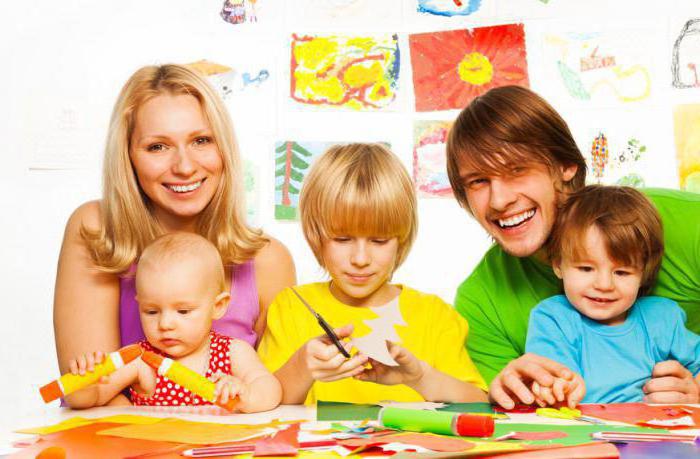
Application
For classes you will need ready-made parts that need to be glued, a base and glue (ideally starch or flour paste). The option of applique with tree leaves is possible if you are doing autumn crafts. For children 2-3 years old, classes should be conducted in order of increasing difficulty.
The first stage is to introduce the child to glue, its properties and operating algorithm: first we smear the part with glue, then we apply it to the paper and press it.
It is important to immediately draw the child’s attention to the fact that he holds the part that he is lubricating with glue with one hand.
When all the difficulties of the gluer's craft have been overcome, you can begin a more creative process: composing compositions from elements pre-cut by elders.
Construction
The activity is very useful because, in addition to the small ones, it develops the child. Of course, the baby himself cannot cope with the role of a designer. But there is always a mom and dad who will help you do something interesting. There are ready-made kits- crafts for a 2-3 year old child, allowing you to assemble figures from several large parts.
But you can do without them: collect chestnuts and pine cones on a walk and make a funny little man. Conduct an unplanned activity while walking.
Other things at hand are also suitable for construction: balls of thread, cardboard bases from rolls toilet paper, all kinds of boxes and boxes. You just have to show your imagination.
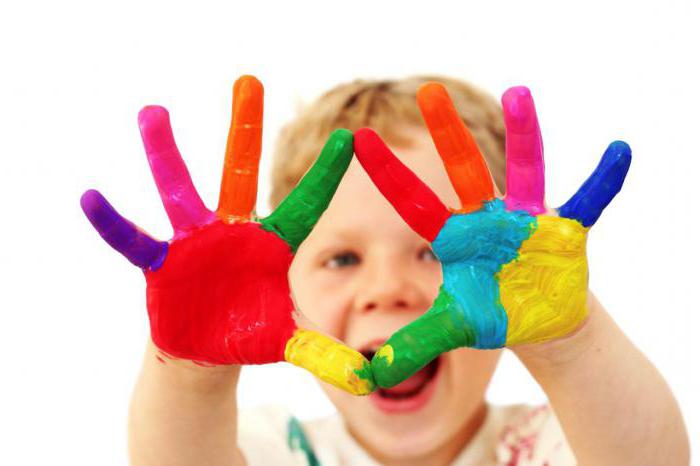
Conclusion
At the age of 2 to 3 years, children’s thinking develops visually and effectively, which is why creative activities are so important, during which the child gains skills in handling objects, labor, self-service, and speech.
The main thing is not to forget the rule: the child should like what he does.
Paper is a popular material for children's creativity. It easily lends itself to the most incredible transformations, thanks to which even the most inexperienced children can make crafts from colored flowers.
The main thing is to choose a task that is feasible for them.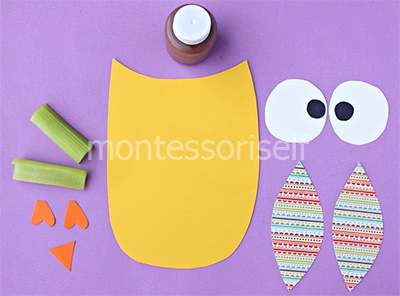
All that remains is to decorate her tummy with prints of bright paint, for which you can use any available means.
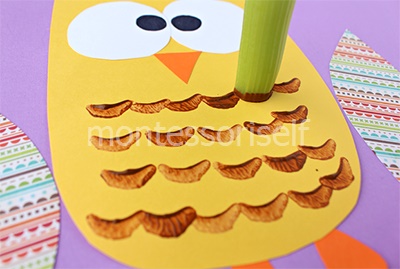
The “owl” applique is ready!
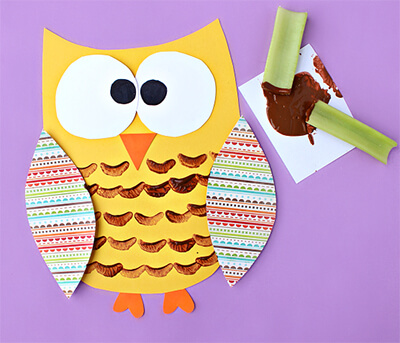
A craft made from a disposable plate is a good choice for working with ready-made templates. We cut out the cardboard parts in advance: the muzzle, ears, spots, and prepare the eyes.
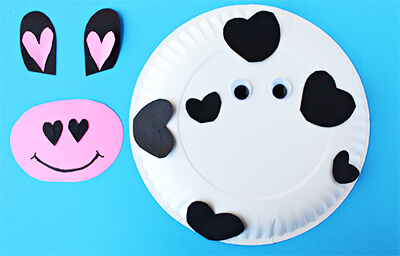
Blanks for crafts “Cow”
All that remains is to show the child how to glue all these elements to the base.
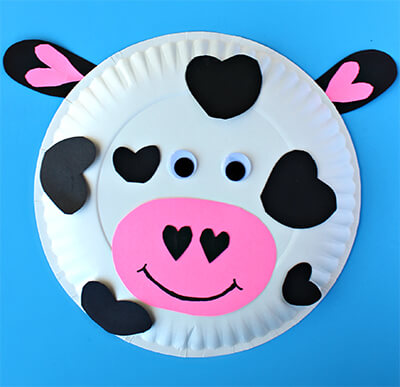
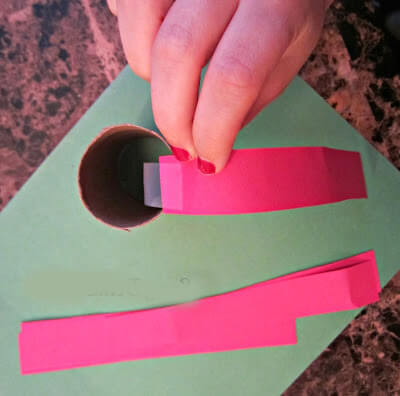
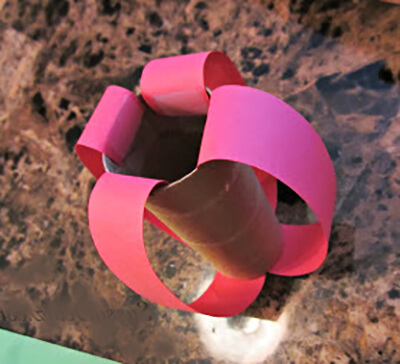
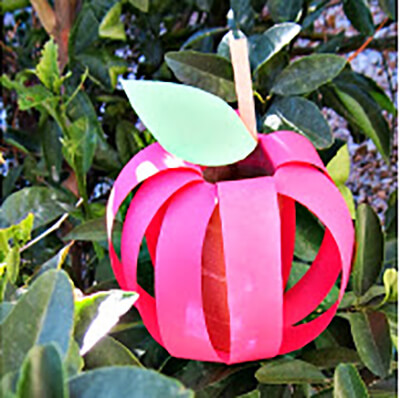
You can make a wonderful tree from colored paper and a cardboard roll.
Cover the green paper with red spots.
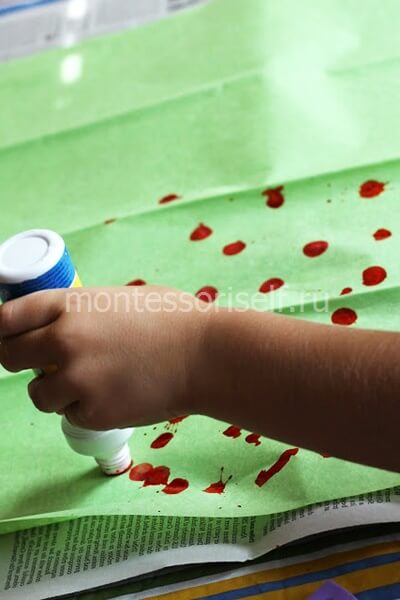
We make cuts on the cardboard roll and straighten them.
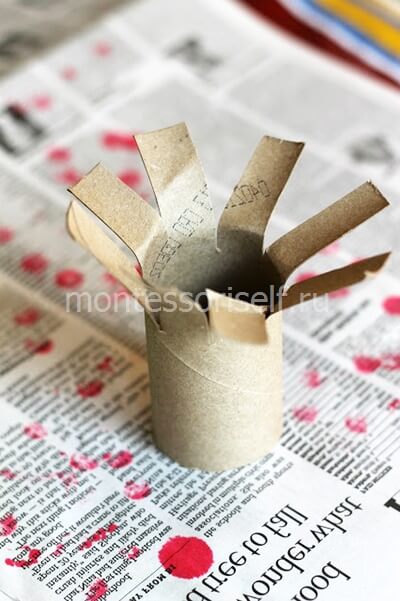
We crumple the green paper with red spots and carefully glue it to the cardboard roll. We will get an apple tree with picturesque apples.
![]()
Craft from colored paper “apple tree”
You can make a very expressive craft from colored paper and cardboard - an “autumn tree.”
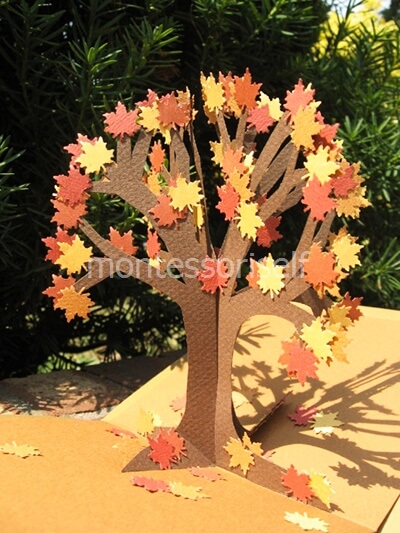
And from yellow stripes glued in a circle to a paper filter or disposable plate, you get a bright one.

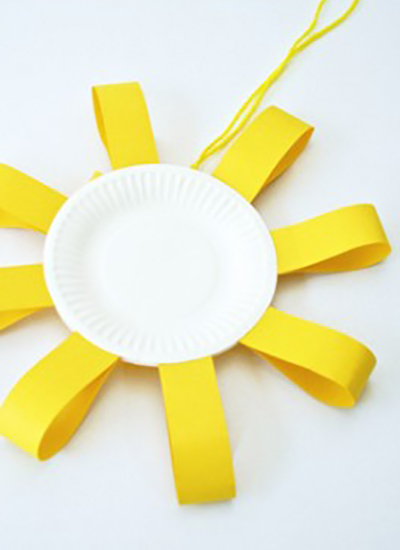
We decorate the sun with lumps of crumpled colored paper, fixing them with PVA glue.
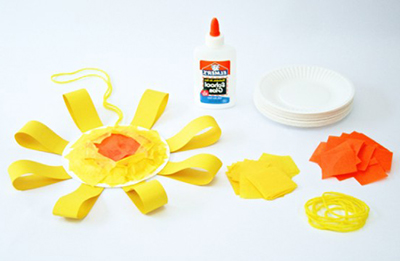
In the center there is crumpled paper

A bright and cheerful paper craft - “Balloon”. To make it, we will need five blanks with a cut out balloon.

We will need to glue the pieces folded in half to each other around the rope - this is the future balloon. Now let's make a basket. For it, we need to fold a strip of cardboard in a circle and glue small ropes to its edges.
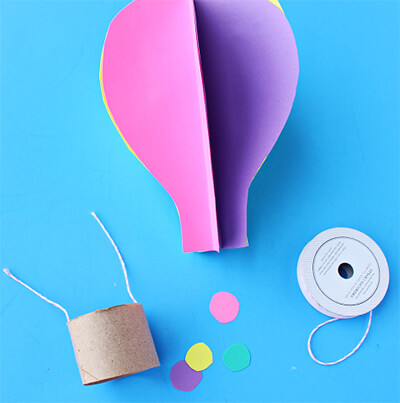
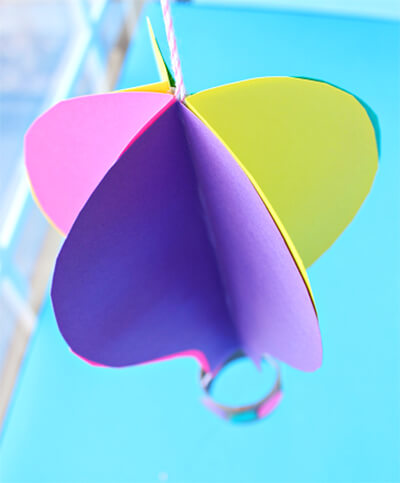
Decorate the basket with colored circles.

You can use objects as a basis for crafts.
For example, from an empty bottle, painted in green, you will get a charming frog if you glue eyes, paws and a tongue to it.
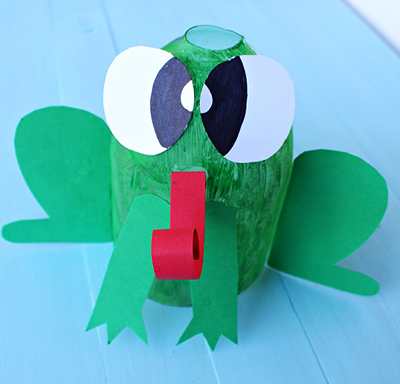
An equally attractive frog will be made from two cells from an egg carton. We paint them and fasten them with tape, glue the tongue and eyes.

We decorate the frog with a bow tie and a crown - and you get a real prince!
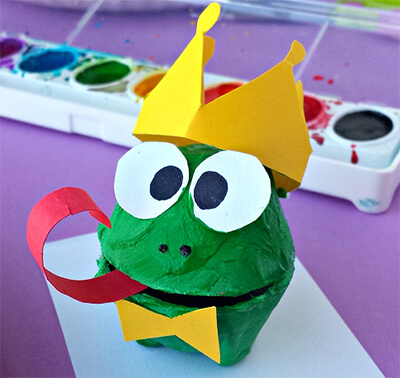
Crafts made from colored paper glued in the shape of cylinders look interesting. By connecting these cylinders with each other, you can get different characters - hares, ducklings, chicks.


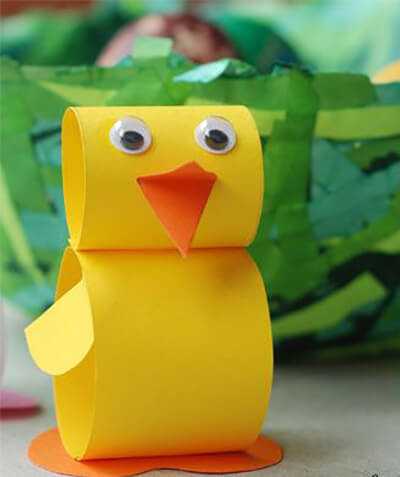
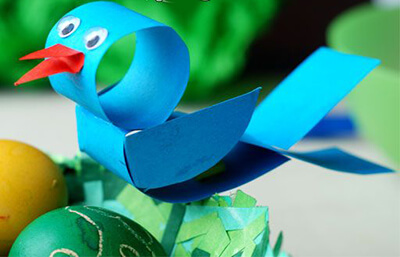
From strips of paper you can make a very impressive cockerel pendant.
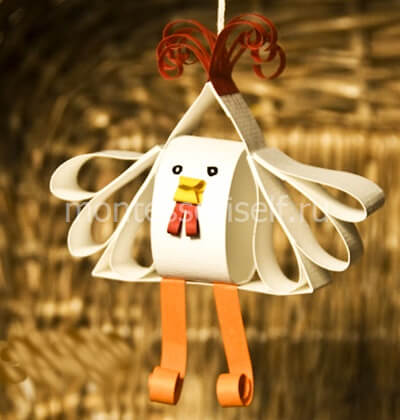
You can make a very beautiful rose out of paper. To do this, you will need to cut a circle out of red paper. Draw a spiral on the circle with a pencil. Cut out a circle in a spiral.

Then we begin to twist the spiral from the edge, forming a bud.
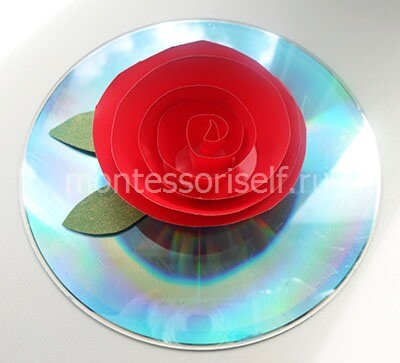
From red thin paper you can make a charming heart pendant. Cut out at least nine hearts from thin paper.

We put the hearts together and sew them on the machine.
You can give your rating!
Master class: “Do-it-yourself crafts” for children 2-3 years old. Barney Bear
Description of the master class: This master class will be of interest to educators and teachers additional education, parents and just creative people. Designed for children aged 2 – 3 years and older.
Purpose: holiday gift, craft - interior decoration.
Target: making crafts from napkins with your own hands.
Tasks:
- teach how to do volumetric applique with your own hands, using the technique of crumpling paper.
- consolidate skills and abilities in working with glue; develop skills in following the rules of working with glue.
- develop fine motor skills of the hands;
- cultivate hard work, accuracy in work, creativity, fantasy, imagination.
Preface to the work:
It is difficult to overestimate the benefits of applications in children's creativity; everyone knows how development affects fine motor skills to intellectual, mental abilities and on speech development. Gluing small pieces of paper onto the base directly affects the development of fingers and motor skills. And I believe that at the age of 2-3 years our beloved children can already begin to glue at least the simplest paper applications or from any other adhesive material at hand (autumn leaves, napkins, fabric, cereals, pasta, lids, cotton wool, snow, and others ).
The main rule for creative activities with a child at this age is to give only those tasks that are feasible for the child. Our task is to instill interest in creativity, and not discourage it. If we offer a child too difficult crafts that are not appropriate for his age, this will most likely lead to the child not being able to do anything, and he will simply watch you do everything for him. Classes should be held in such a way that the main part of the work is done by the child, not the adult.
In the presented master class, you may need the help of an adult when cutting out with scissors and gluing parts of the craft to the base.
Materials and tools:
- colored cardboard (brown);
- colored napkins;
- magazine paper;
- simple scissors;
- a simple pencil;
- PVA glue;
- colored ribbons;
- eyes, markers.
Step by step execution of work.
Let's prepare necessary materials and tools.
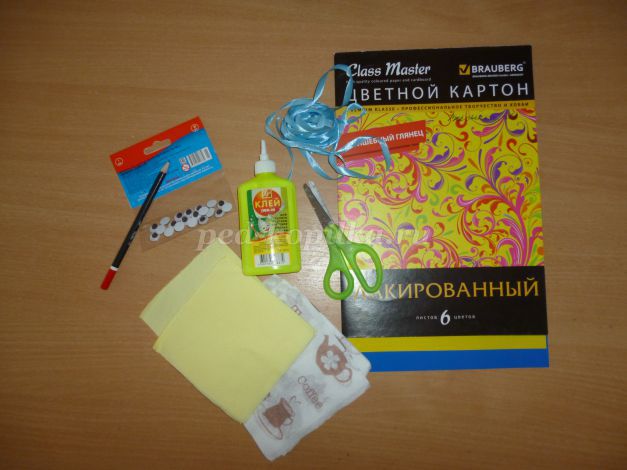
Sample:

Safety precautions when working with glue:
1. Apply glue to the surface of the product only with a brush.
2. Do not let glue get on your fingers, face, especially eyes.
3. If glue gets into your eyes, rinse them immediately with plenty of water.
4. After finishing work, be sure to wash your hands and arms.
5. When working with glue, use a napkin.
Work sequence
1. Prepare a teddy bear template.

2. Take colored cardboard (brown) and trace with a simple pencil teddy bear template.

3. Cutting. These stages of work are performed by an adult.
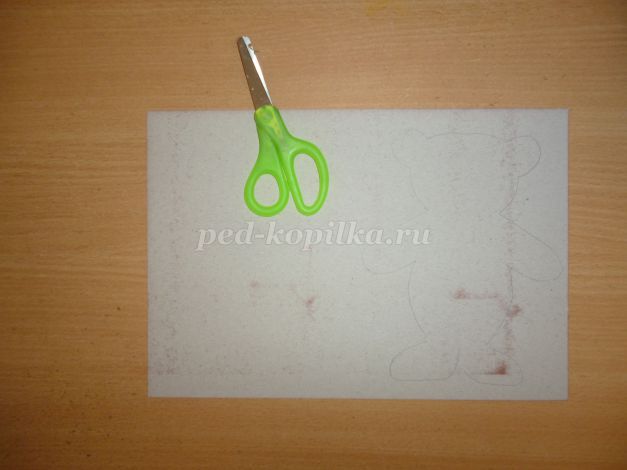
4. The result is a flat piece.
This is what our craft wall looks like now
Yes, we often stayed at home. So we had as much fun as we could. Of course, most of the work in creating these crafts was done by the mother, but there is also a bit of children's participation in them.
Below the cut there is more information about some of these crafts, or rather those made from natural and non-standard materials or through non-standard solutions. Some of the crafts are my ideas, and some are ones I spied on the Internet.
Turtle. Under the shell of pistachio husks is plasticine, on which this shell rests. The limbs and head are paper.
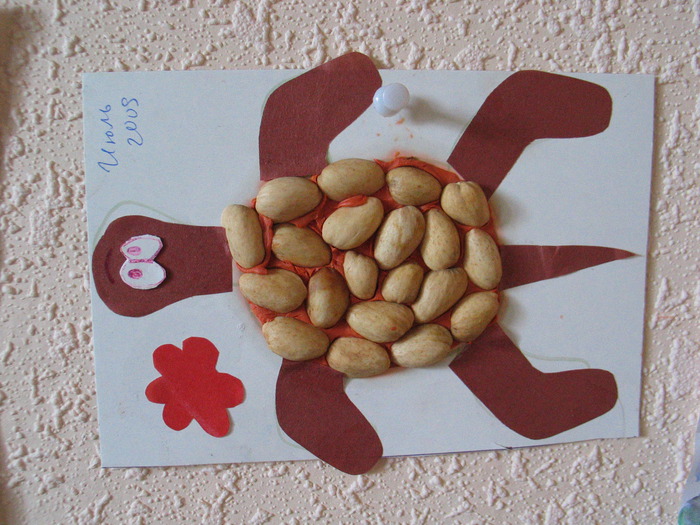
Two more similar turtles, only the limbs and head are plasticine

Still life: sausages on a saucer and a painted plate. Sausages - tubes made of colored paper (mom made them, and Senya attached them where he needed them). Flowers on a plate - drawing with a sponge through a stencil. (I held the stencil, and the child used the sponge)
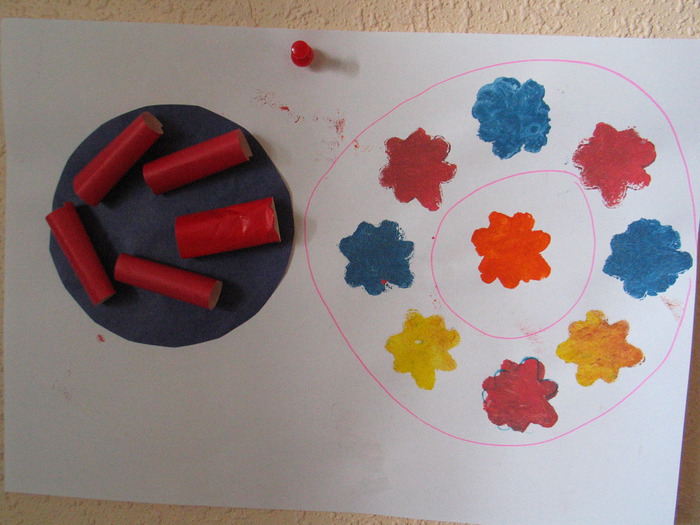
another still life, only the painted plate has been replaced by a voluminous cup. Well, honestly, my mother made the cup. A trimmed cone glued to form the protruding half of the cup. Signed - Senya asked to sign.
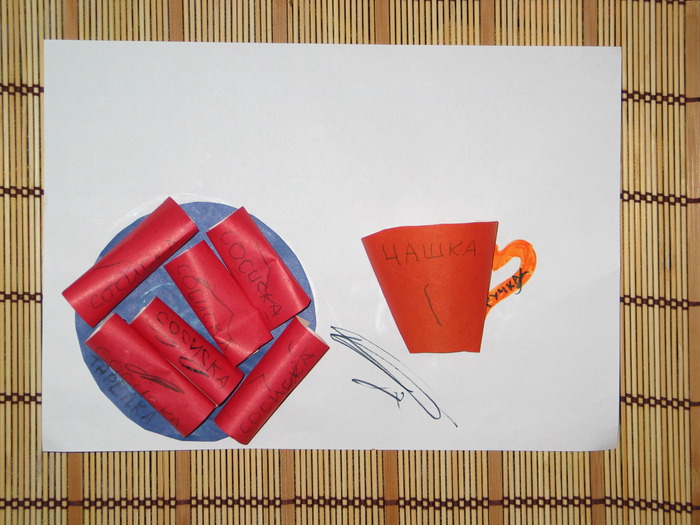
Eagle hunting a mouse. The feathers are glued to plasticine, the legs and beak are also plasticine. Mouse made of corrugated cardboard. I like the craft, but some people scolded us for the pigeon feathers because of the uncleanliness of these birds... :(

Walk in autumn. Leaf fall from glued real ones autumn leaves. Dog, cat and bird - corrugated cardboard for children's crafts.
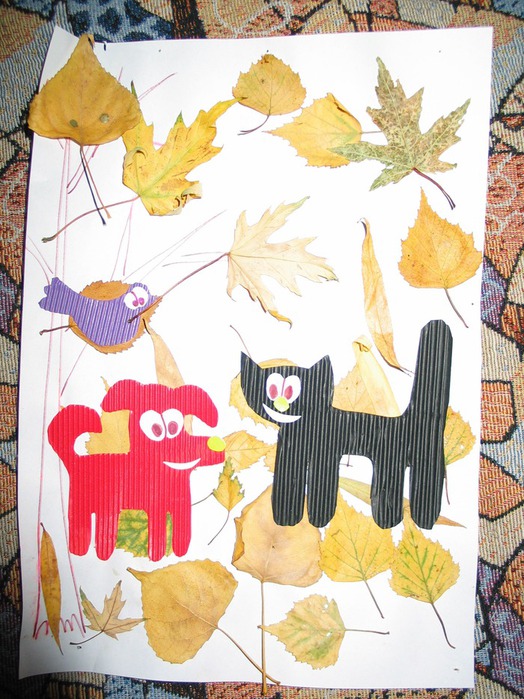
The Chestnut Man and Tim the Duckling. Well, I won’t tell you what they’re made of. And so it is visible.

Christmas tree. Cardboard cone. Decorations - small stickers bought on stationery displays, a streamer, an unbreakable Christmas tree toy, a bell, a top made of my favorite corrugated cardboard.

This applique is made of self-adhesive paper. Senya loves her very much. No need to apply glue ;) . The figures are my mother’s, but I glued them myself. The multi-colored rectangles are pedestrian crossings, he came up with this himself.
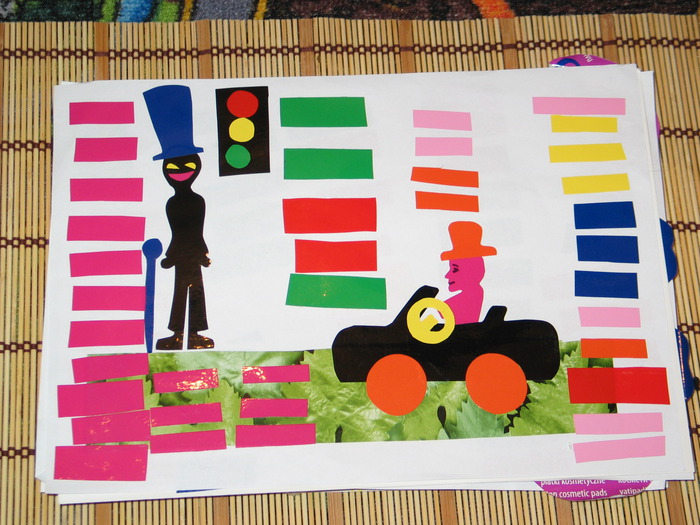
This is our home. Well, you understand who came up with the idea of making trees on the house and black windows everywhere :).
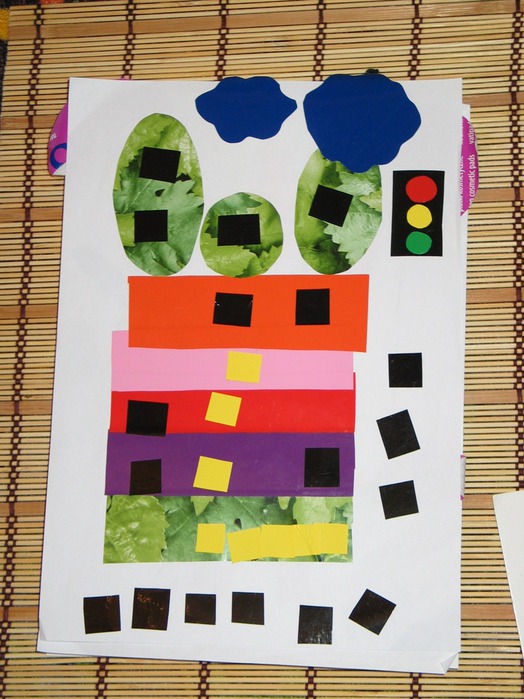
This is a city made of the same self-adhesive paper. I just cut it out, the composition was composed by Senya.

Clouds and snow - confetti resulting from my child opening the garbage disposal at the hole puncher.
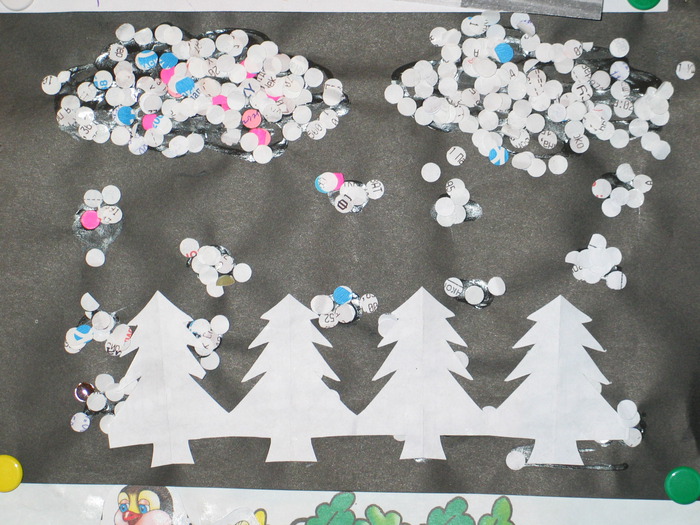
Chicken in the nest. The nest is made from waste obtained after sharpening colored pencils.
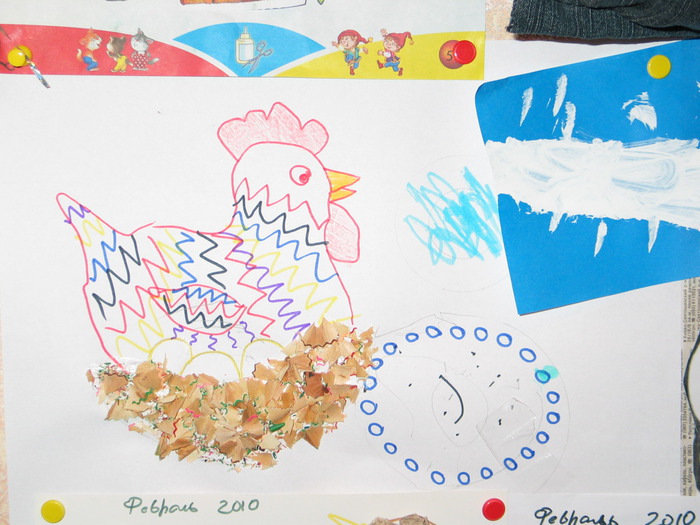
Cockerel painted with pdastilin. Senya took part, but my mother really wanted it to be beautiful, so I finished it more carefully. (I know it’s better not to correct it, but I really wanted to)
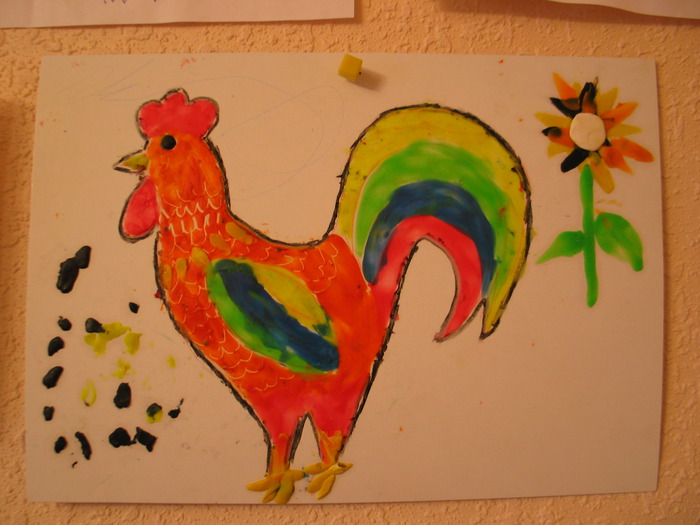
Lamb made of cotton wool glued with PVA glue. Senya came up with the idea for the ponytail mitten. I had to make 4 boots instead of two.
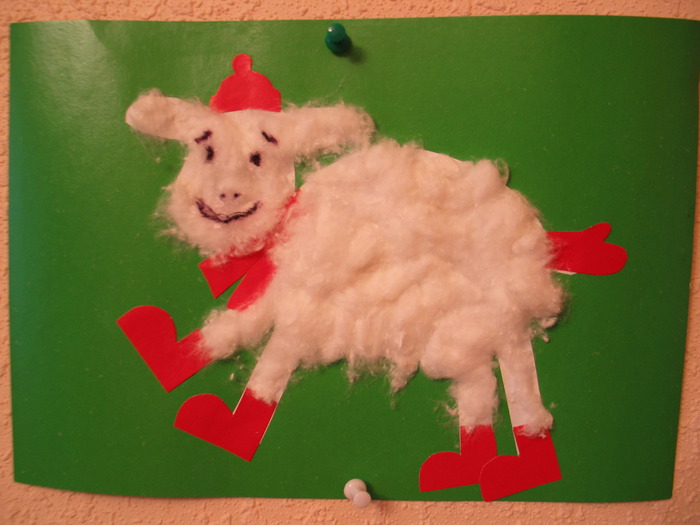
collage of magazines instead of colored paper.

Caterpillar. The body, mouth and horns are made of earrings (I don’t know what kind of wood). Bushes - fir branches.

Another one of the other earrings. We also made willow from earrings. They took a dry branch, attached it to a plastic lid with plasticine so that it would stand, and planted earrings on pieces of plasticine at the ends of the branches. It turned out very realistic, but I can’t find a photo...
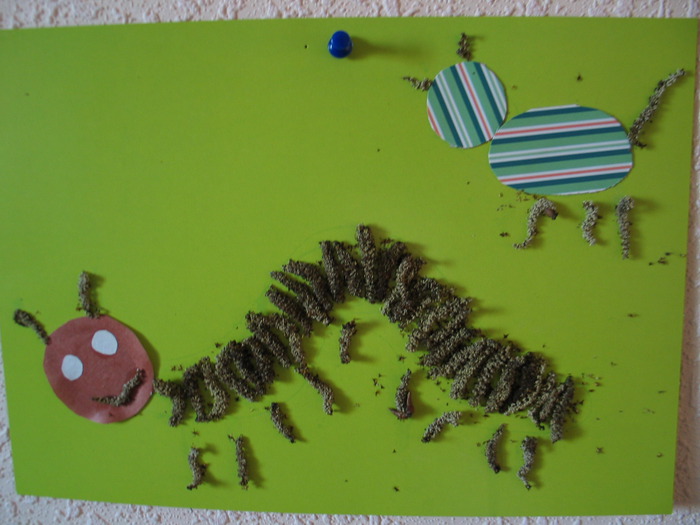
Bear. Made from toilet paper rolled into balls and glued with PVA glue. The blue areas are a napkin treated in the same way as toilet paper.
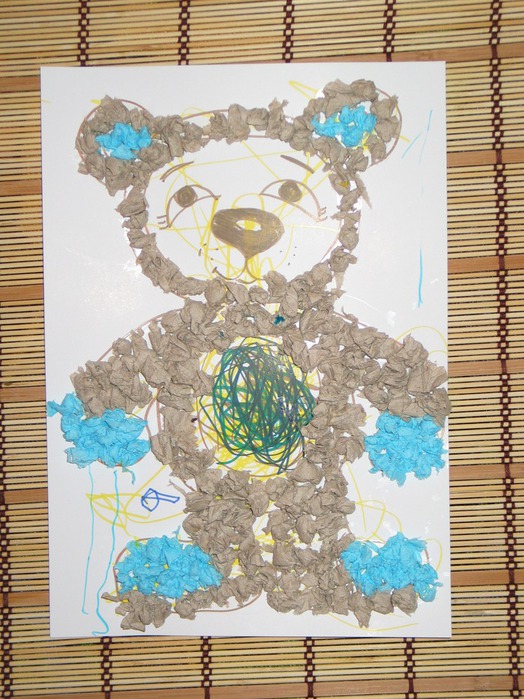
The lion's mane and tail are also made of toilet paper, only rolled into tubes and, after gluing, painted with gouache.
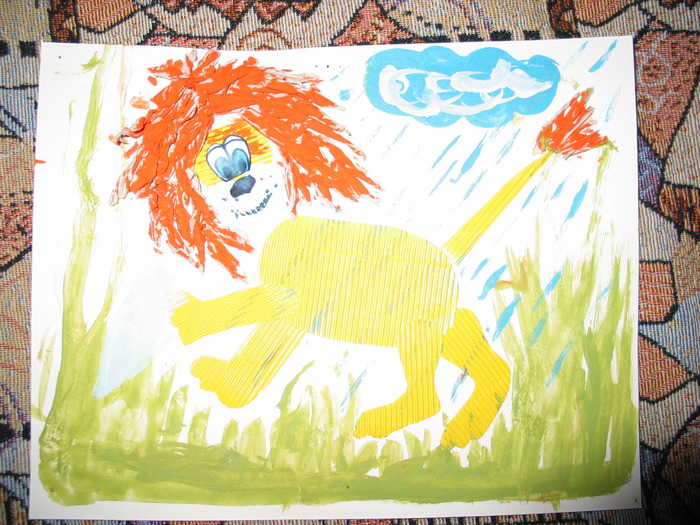
Hare from the same materials

Cats. Next to the vase on the left are small mice and cats with bodies made from cats.

The body and tail are cotton wool, the paws and ears are cats. The mouse is the body of a cat.
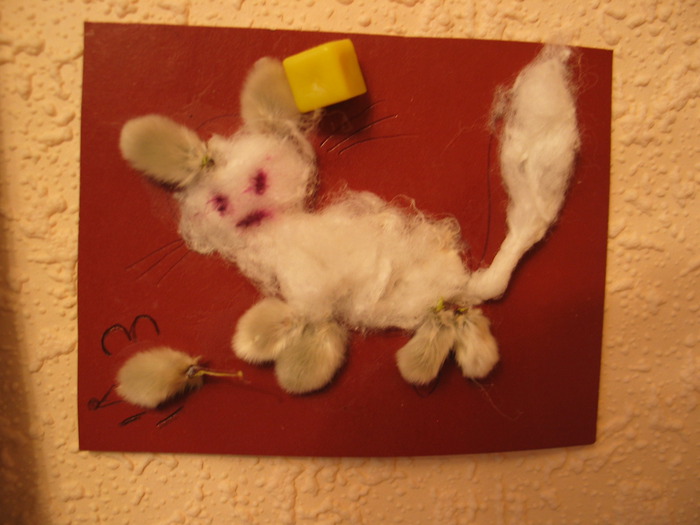
Body, hairstyle and tail of a lamb from seals.
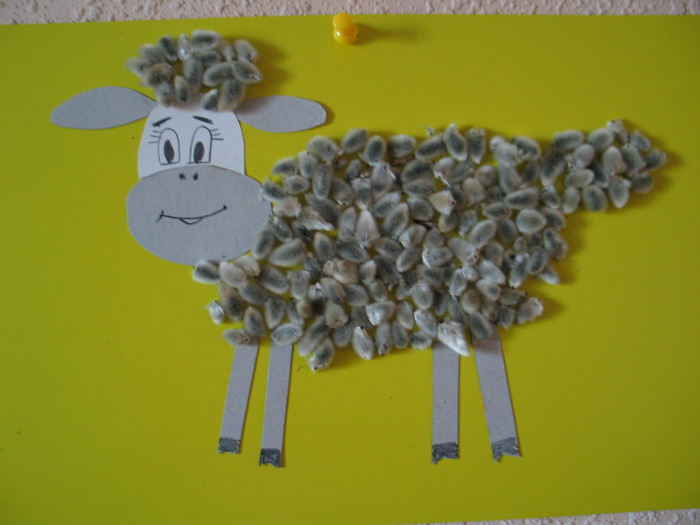
Next comes grain painting. It’s done like this: first fill the desired area with glue, then sprinkle with cereal, then pour the excess into the trash. Sena really enjoyed playing with cereals. So there was a double benefit here - both the craft and the process of pouring cereals.
Hen and chick. Semolina chicken on PVA glue, nest - toothpicks on plasticine. Corn grit chicken.

Semolina with PVA glue on cardboard.
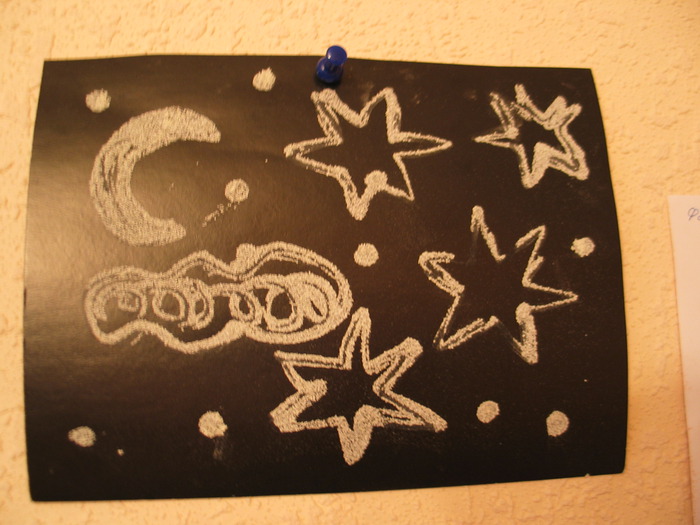
I saw this giraffe on the Internet. I really liked it. We made it from buckwheat and corn grits.

Here are semolina, millet and corn.

Well, that's probably all unusual crafts. We don't do much right now. It’s summer, kindergarten, and I want the child to do more himself, but now, for the most part, if we sit down to do crafts, then I do it myself, and he watches, and then loses interest. Now I try to hand him scissors, glue, paints and give him freedom of action. Sometimes it works out, sometimes it doesn’t, we don’t get upset :) . And in general he’s more interested now role playing games I like to play. Play out some scenes to make the cars talk, soft toys. I somehow lost interest in crafts...



